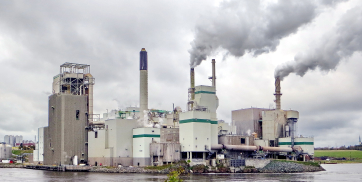On Thursday, July 6, the U.S. Environmental Protection Agency (EPA) proposed revisions to the Greenhouse Gas Reporting Program (GHGRP), specifically regarding Subpart W for petroleum and natural gas systems which describes the calculations operators use in generating an annual emissions estimate for facilities emitting over a certain threshold.
The GHGRP has been under scrutiny as numerous measurement campaigns have highlighted significant discrepancies between emissions totals generated based on the GHGRP approach and emissions totals generated based on advanced screening measurements (e.g., satellites, aircraft, mobile platforms and continuous monitoring systems). Many papers have pointed out that the GHGRP underreports methane because it doesn’t account for large “super-emitter” sources.
This highly anticipated proposal represents the next step in U.S. methane mitigation policy towards broader inclusion of advanced screening technologies. This proposal will also have significant implications for the U.S. Greenhouse Gas Inventory and the upcoming methane fee.
However, while measurement data from advanced screening
Background
The EPA’s revisions to the GHGRP are under the authority of the Inflation Reduction Act of 2022 which, among other things, tasked the EPA with revising Subpart W to incorporate more empirical data. The improved Subpart W emissions reporting will be the basis for charges imposed on operators under the Inflation Reduction Act’s Waste Emissions Charge on methane emissions (i.e., methane fee).
The Greenhouse Gas Reporting Rule, originally published in 2009 (re-proposed in 2010 for petroleum and natural gas systems) is a federal regulation requiring reporting of greenhouse gas emissions, under the authority of the Clean Air Act, for various facilities and suppliers. In addition to oil and natural gas systems, this includes other sectors like waste, power plants, and refineries. Currently, methodologies for calculating emissions for oil and natural gas systems are based on a number of different approaches including engineering calculations, emissions factors, and empirical data in certain cases (e.g., measurements of flow rate and pressure).
The proposed rule is a ~650 page document posted to the EPA website, detailing the addition of new sources requiring reporting and the addition of new or revised calculation approaches to existing sources. In particular, and in order to address the requirements of the Inflation Reduction Act, the EPA revised calculation approaches of many sources to incorporate measurement data. A new sources was also added to account for “other large release events”. These modifications are summarized in the following sections.
Calculation of new sources and other large release events
The EPA acknowledges that in order to improve the accuracy of emissions reporting, Subpart W must improve its ability to capture maintenance or other abnormal emissions events. In response, the EPA has proposed a new source called “other large release events”. This category will largely be based on advanced screening methods (also referred to as “top-down” methods in the proposal).
The EPA expects that data from advanced screening methods conducted according to NSPS OOOOb (proposed last year) could be used to calculate emissions from large release events. Further, emissions and other details received via the super-emitter provisions of NSPS OOOOb (the “Super Emitter Response Program”) should also be included in “other large release event” reporting, and if not reported, a reason must be provided.
However, while the inclusion of advanced measurement methods in the GHGRP is encouraging, the EPA cautions that advanced measurement data will not be a replacement for other calculation approaches. As the EPA describes:
“While this top-down data is very useful in identifying possible large emissions events that are not captured by other reporting obligations, it is not presently able to provide annual emissions data to the degree of accuracy and certainty required by other provisions of this rule. It is not currently possible to use remote sensing data as the only basis to extrapolate annual emissions data.”
“Other large release events” include both intentional and unintentional release events with an instantaneous threshold of 100 kg/hr and an event total emissions threshold of 250 mtCO2e.
In addition to the “other large release events” source, the EPA is also adding source categories for nitrogen removal units, produced water tanks, mud degassing, and crank case venting.
Revisions to existing sources
Several existing sources have been revised with new calculation approaches or modifications to existing calculation approaches. Several select sources are summarized in the table below.
- For equipment leaks, there are several calculation approaches available to operators. These approaches are broadly categorized into calculations based on equipment leak surveys and calculations based on population counts. In both cases, the EPA has revised default emission factors to account for new data in the academic literature. The EPA has proposed new calculation approaches based on a direct measurement approach such as bagging or a high volume sampler. However, reporters cannot mix and match emission factors and direct measurements.
- For pneumatic device and pneumatic pump venting, the current calculation approach is based on default population emission factors. In the updated proposal, these default population emission factors were updated based on new data and new calculation approaches were added. For continuous and high bleed pneumatic devices, operators now have the option to calculate emissions based on readings of the flow monitoring device at the natural gas supply line. For intermittent bleed pneumatic devices, the EPA has proposed that all devices must be monitored regularly, and different default leaker emission factors are applied depending if the device is malfunctioning or operating normally.
- Previous studies have suggested thief hatches might be a large contributor to GHGRP emissions underestimation. EPA’s modifications to atmospheric storage tank emissions calculations attempt to address this limit. While the current Subpart W approach asks operators to approximate vapor recovery system capture efficiency “using best available data”, the EPA notes that “it appears that reporters may not be accurately accounting for emissions from open thief hatches on atmospheric storage tanks”.The EPA is now proposing to require a thief hatch sensor or visual inspection to more accurately account for when a thief hatch is open or not properly seated.
In addition to the details of the emissions calculations, the EPA is also proposing changes to the granularity of emissions data reporting. Currently, within the Onshore Petroleum and Natural Gas Production and Onshore Petroleum and Natural Gas Gathering and Boosting industry segments, data is aggregated and reported at the basin or sub-basin/county level. To improve transparency, the EPA is proposing to disaggregate this data, as much as possible (with details described in the proposal), to the site-level. This will be a tremendous improvement in transparency for those in academia and industry that use this data.
These revisions would apply to reports for the 2025 reporting year (i.e., become effective on January 1, 2025).





